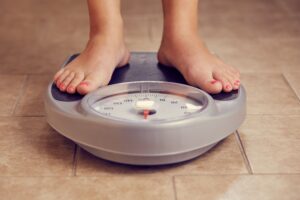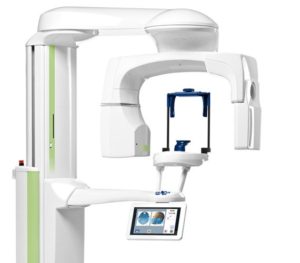
Living a healthy life requires (a). eating a balanced diet with moderations on sugar, alcohol, caffeine and fats; (b). getting ample exercise every day; (c). having positive social connections; not smoking; and, (e). getting sufficient sleep.
When we think of sleep, however, it’s not just the hours between turning the bedside lamp off and when the alarm buzzes the next morning. The time we spend in the bed doesn’t necessarily calculate into a proper dose of “quality sleep” needed each night for the body to function in a healthy manner.
According to the CDC, adults under the age of 60 need a minimum of 7 hours of sleep per night. Those over 60 need a little more, between 7 – 9 hours. Yet, for adults who toss and turn, snore loudly, or struggle with a sleep disorder, being in the bed for 7 hours doesn’t mean that sufficient sleep is achieved.
Sleep is divided into stages. It goes from wakefulness and back-&-forth from stages of rapid eye movement (REM) sleep to non-REM sleep. It is in REM sleep that allows the brain to ‘reset’ the body’s systems for healthy function. For this to occur, adults need to spend 20 – 25% of sleep time in the REM stage, or about 90 minutes during a 7 hour sleep. Why is this so important?
If you’ve ever had a night of too little sleep or experienced jet lag, you may have felt sluggish the next day, hungrier and with cravings for sugar and carbs. This is because the brain is trying to help the fatigued body find quick sources of energy. This urge to eat is not a lack of willpower, it is actually hormones that are operating off-kilter. Since the brain wasn’t able to do its nightly upkeep to certain hormones, the ones that regulate feelings of hunger and fullness are now working against you.
Ghrelin is referred to as “the hunger hormone” because it stimulates your drive to eat. Leptin is the hormone that tells the brain, “I’m full” and helps to regulate energy metabolism. When these hormones are functioning improperly due to nightly disruptions, weight gain is a common result.
There is a growing concern regarding the obesity rate in the U.S. and the prevalence of sleep disorders. According to the National Institutes of Health (NIH), 70% of Americans are medically classified as being overweight or obese. Overweight is having a body mass index (BMI) of 25 or greater, with obesity being a BMI of 30 or greater. Sixty percent of obese men and 50% of obese women have sleep apnea.
Approximately 1 in 3 adults in the U.S. are categorized as obese and 1 in 5 are affected by sleep apnea. An estimated 75% of sleep apnea patients weigh 130 percent of their ideal weight.
According to the American Academy of Sleep Medicine, it is “estimated that 26 percent of adults between the ages of 30 and 70 have sleep apnea.” (https://aasm.org/rising-prevalence-of-sleep-apnea-in-u-s-threatens-public-health/)
In addition to weight gain and obesity, sleep apnea has been associated with many serious health problems, including …
Heart – Sleep apnea has been shown to increase blood pressure by 37%, coronary artery disease risk by 30% and cardiac arrhythmia by 54%. Moderate to severe sleep apnea increases the risk for congestive heart failure by 76%.
Stroke – Disrupted breathing and low blood oxygen levels can increase the risk of stroke, with the risk increasing by the severity of sleep apnea.
Diabetes – Over 30% of people who have type 2 diabetes have sleep apnea.
Mental Sharpness & Alertness – Sleep apnea can lead to anxiety, depression, lack of motivation, reduced attention span, moodiness, and poor judgement. Daytime sleepiness also leads to higher incidences of auto accidents as well as reduced work efficiency, impaired concentration and slower reaction times.
Sexual Health – Sleep apnea decreases blood flow, which contributes to a loss of libido (sexual drive). Heavy snoring, often a precursor to sleep apnea, also causes many bed partners to sleep in separate bedrooms.
GERD (gastroesophageal reflux disease) – About 60% of people who have sleep apnea suffer with this acidic irritation.
Fortunately, more adults are becoming familiar with the hazards of obstructive sleep apnea (OSA). This sleep disorder causes breathing to repeatedly stop and start during sleep, depriving the body of oxygen. These pauses can occur hundreds of times per night and pauses may last for up to a minute.
Although CPAP is a familiar form of sleep apnea therapy, only 22% of those who have them are said to use them on a consistent basis. This device consists of a mask worn over the face that is attached to a hose, which is connected to equipment that uses a fan to force oxygen into the airway. Reasons for non-compliance by CPAP users includes not being able to get comfortable in bed, feeling claustrophobic, finding the devices noisy, device inconvenience (especially during travel) and embarrassment.
For individuals who suffer with mild to moderate levels of sleep apnea, there is a simple alternative. Dental appliances are becoming more common as research reinforces their effectiveness to treat mild to moderate sleep apnea and snoring. In our Shelby Township dental office, we offer an FDA-approved method to restore sufficient oxygen during sleep without the bulk, noise, confinement and awkwardness of CPAP devices. By sleeping with a custom-designed oral appliance, the need for wearing CPAP is eliminated.
These oral appliances are small, comfortable, and won’t interfere with your ability to sleep soundly. They are effective for many who suffer with S leep Apnea as well as those who are heavy snorers. As a skilled Neuromuscular dentist, I am able to incorporate advanced measures to offer optimal comfort with exceptional results.
leep Apnea as well as those who are heavy snorers. As a skilled Neuromuscular dentist, I am able to incorporate advanced measures to offer optimal comfort with exceptional results.
We have also committed to some of the most advanced technology available in pinpointing precise areas of airway passage interference. Welcoming patients from throughout Macomb County and beyond, we provide effective sleep apnea and snoring therapy with the help of CONE BEAM 3D imaging. This highly-advanced technology captures clear, concise views of airway passages at the lowest radiation levels possible and in one pass around the patient.
While we are helping you to regain restful sleep, we recommend these tips to get the most from your “lights out” schedule:
• Sleeping on your side can help to keep the airway open.
• Elevate the head of your bed 6-8 inches. (Avoid stacking pillows under your head. This can lead to neck issues.)
• Use Breathe RightR nasal strips (purchased in the the appropriate size). Bypass the generic brands.
• Use nasal spray every night and just before bed. We advise Flonase (available over the counter).
• Keep your bedroom perfectly dark or use a mask over your eyes. Dim lights for an hour or two leading up to sleep time. Avoid using electronics with a screen within two hours of bedtime and avoid laying down within 30 minutes of eating (to avoid the risk of heartburn).
• Keep your bedroom at about 65 degrees.
• Consider using an air cleaner and a humidifier. The humidity in your bedroom should be between 30 – 50%.
• Once your custom-fitted oral sleep appliance is made – wear it every night without fail. Your oral appliance helps the airway become accustomed to the new open path at the back of your throat down to your lungs.
If you suspect you may have sleep apnea or snore loudly, we urge you to schedule a free consultation asap. This condition will not improve on its own, and may worsen. At this time, these small oral appliances are recommended for mild to moderate sleep apnea, not severe.
Begin by calling our Shelby Township dental office at 586-739-2155 or tap here to begin.